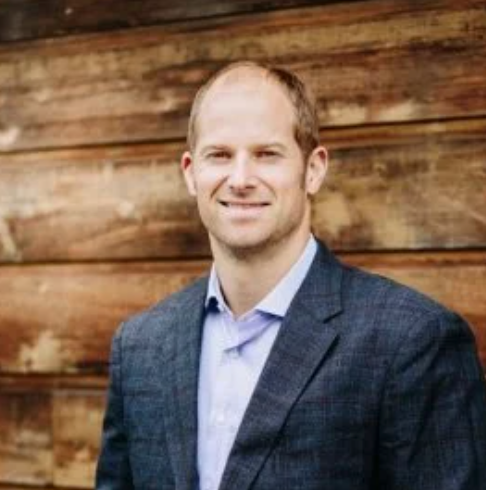Most people confuse financial planning with spreadsheets and fancy charts. But a real financial plan—the kind that actually makes a difference in your life—boils down to two simple, yet critical questions:
-
How much do I need to save—and by when—to retire comfortably and stay comfortably retired?
2. What happens to my family financially if I don’t wake up tomorrow?
Everything else? Ancillary. And often a distraction.
For professional athletes, especially in CrossFit, time is not your friend. You don’t have the luxury of a 40-year W-2 career. Your income is front-loaded, often volatile, and built around performance. That’s a completely different playing field than the average person. Which means your plan can’t look like theirs.
You need a strategy that’s built for your reality—and capable of creating financial freedom long after the competition ends.
So here’s the playbook we walk athletes through when building their plan.
Step One: Define the Goal
It sounds obvious, but most people skip this step. They invest without purpose—like training without knowing what event you're preparing for. The foundation of your financial plan should start with clear, specific goals. Do you want to retire by 40? Fund your children’s education? Travel, start a business, or support your family?
Whatever your goals are, write them down. Be precise. Because the clearer your destination, the more accurate—and effective—your financial strategy becomes.
Step Two: Quantify It
Once we know the goal, we do the math. That means projecting your future income needs and accounting for inflation. The dollar amount you’ll need in retirement isn’t today’s number—it’s tomorrow’s, inflated and magnified over decades.
A retirement goal of $150,000 per year today could easily require $250,000 or more annually in the future, depending on how far away retirement is and how inflation trends. We work backward from that target to determine the size of the portfolio you’ll need—likely multiple millions of dollars—to generate that income safely and sustainably.
This is your benchmark. Your accumulation target. Your “training goal” on the financial side.
Step Three: Build Your Foundation
No plan survives without cash. Life throws curveballs—injuries, dropped contracts, delays in sponsorship payments. That’s why we recommend having 3–6 months of living expenses in a high-yield savings account or money market fund. This is your personal safety net. It’s not about growth—it’s about flexibility and protection.
It prevents forced decisions like liquidating investments or taking on high-interest debt when something unexpected happens.
Step Four: Understand the Math Behind Growth
Once your emergency fund is in place, the focus shifts to growth—and that means equities. If your goal is financial independence, you need to own assets that historically outpace inflation and build real wealth.
No asset class has done that more consistently over time than equities. Not cash. Not bonds. Not real estate. Not crypto. Equities. And yes, they come with volatility, which is exactly what makes them powerful over the long term.
But here’s the key: you must be willing to endure temporary losses in pursuit of permanent gains.
Step Five: Stick to the Plan—Especially When It’s Hard
Markets don’t move in straight lines. Temporary drawdowns are part of the deal. If you're going to benefit from equity ownership, you have to commit to staying invested through the full cycle.
Don’t time the market. Don’t “wait for things to settle down.” That’s the financial equivalent of skipping workouts when the WOD looks intimidating. You don’t get stronger by avoiding the hard days.
You get stronger by showing up.
Step Six: Review, Don’t React
Your plan should be reviewed annually, but not rewritten every time the market hiccups or headlines scream “crisis.” The only time we make meaningful changes is when your goals change. Not your mood. Not the media cycle.
That discipline is what separates those who win with money from those who constantly feel like they’re starting over.
This Applies Everywhere
These principles aren’t tied to a specific country or currency. Whether you live in the U.S., Australia, Canada, or anywhere else—the fundamentals don’t change. The accounts and tax codes may vary, but the mindset and behaviors that lead to financial success are universal.
Final Thoughts
You already live a life of structure, intensity, and accountability in your sport. You track your macros. You log your lifts. You plan your training cycles months in advance.
Why should your financial life be any different?
Your body won’t be your income source forever. That’s not a knock—it’s a fact. But the choices you make now can set you up for decades of freedom, security, and peace of mind.
So build your plan. Stick to it. Trust the process.
Looking for a coach to talk to about how to create the plan that’s right for you and your goals? We’re here to help. Just use this link to grab a time on my calendar: HERE
Ben Beck is Managing Partner & Chief Investment Officer at Beck Bode, a deliberately different wealth management firm with a unique view on investing, business and life.
A key part of the PFAA's mission is to provide meaningful education and support to athletes. This collaboration between the PFAA and Beck Bode is designed to help athletes navigate the unique financial challenges of their careers - managing variable income, planning for taxes, saving for the future, and building long-term financial security so they are not only prepared for success in competition but also in life outside the sport.

 Benjamin Beck, CFP®
Benjamin Beck, CFP®